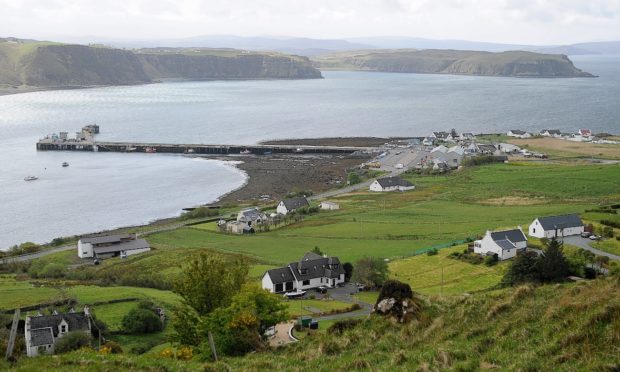Testing has begun on a new travel scheme aimed at boosting visitor numbers across the country’s inhabited islands.
The Scottish Islands Passport (SIP) initiative is the brainchild of regional transport agency Hitrans – the Highlands and Islands Transport Partnership – to encourage more people to visit more of Scotland’s islands all year round.
A £50,000 contract to design, provide, host and support a website and app for the project has been awarded to Edinburgh-based Whereverly Ltd, who have worked with various organisations, particularly those in the tourism sector, to provide similar work.
Neil MacRae, of Hitrans, explained that “user testing” was also under way.
He said: “We are actually doing some user testing of the passport at the moment on Shetland, but it is restricted to a small group of people already on these islands.
“We have decided not to push further at present due to current Covid restrictions which look like getting tighter very shortly.”
The passport initiative currently covers 72 Scottish islands which are permanently inhabited and easily accessible via public transport, or other regularly timetabled, affordable transport.
Mr MacRae said: “The main outcomes of the project are to support sustainable economic growth on the islands, encourage slow tourism and encourage the use of public transport links where possible.
“There is a particular focus on raising the profile of less well-known islands, promoting travel outside of the traditional summer season in order to create more stable, sustainable economic opportunities.”
Last year, two women from Jura were chosen to manage the scheme.
Sarah Compton-Bishop and Kirsten Gow have been selected as project managers to help roll out the innovative scheme, working from their home island.
The initiative has already obtained funding support from the EU Leader programme and gained the backing of the Scottish Government and Shetland transport group Zetrans.
Mr MacRae added: “If successfully implemented, the proposal has the potential to help support lifeline transport services to the region’s most remote and fragile islands.”
He said the marketing opportunities around the concept were endless, adding that incentives could be introduced for holders where they can get cheaper fares the more they tick off the islands.
For example, he said the passport could be issued to everybody in Scotland to encourage them to visit as many of the islands as possible over their lifetime.
He added: “Among the most successful tourism initiatives are those which encourage the visitor to follow or complete a trail or visit a list of attractions.
“From the West Highland Way to Munro-bagging and the recent huge success of the NC500, they are all examples of existing attractions that have been marketed and packaged in ways that have encouraged significant increases in visitors.”
The initiative is similar to a scheme being operated in Ireland, the Wild Atlantic Way Passport.
This gives the visitor a guide to the route but also encourages them to complete it by offering the chance to pick up 188 unique stamps along the way. It is estimated that it attracted 1.3 million visitors last year.










